War, what is it good for?
Well, despite how you might answer that question, one thing for sure is that it’s changed the course of history several times over.
Each war has several battles, and some of those battles have definitively pushed the outcomes one way or the other. New regimes have risen and some have held on because of how those battles panned out.
Today, we take you on a tour through history, in chronological order, to hear about the 25 Most Decisive Battles In History.

Battle of the Atlantic (1939-1945)
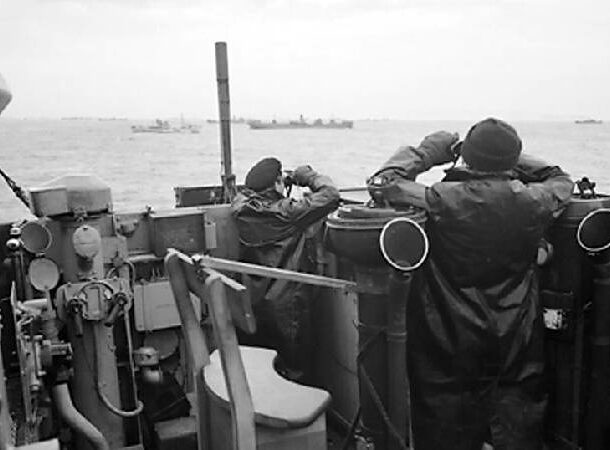
The Battle of the Atlantic was fought between the Allied forces and the Germans during World War II. It was the longest and most decisive battle, lasting five years, eight months, and five days.
As the title implies, it was fought in the seas of the Atlantic. With their superior submarine
(U-boat) power, the Germans attempted to cut off British supplies by sinking their merchant ships.
Germans were making significant headway at first, and then it was an ongoing battle of increasing naval technology and intensity.
In the end, the Germans could not sink enough ships to make the British surrender. After the US entry into the war, the Germans couldn’t keep up with the productivity gains of the Allied forces.
Had the Battle of the Atlantic gone in the other direction, the British outcome in WWII would have been much different.
Battle of Königgrätz (aka Battle of Sadowa) (1866)
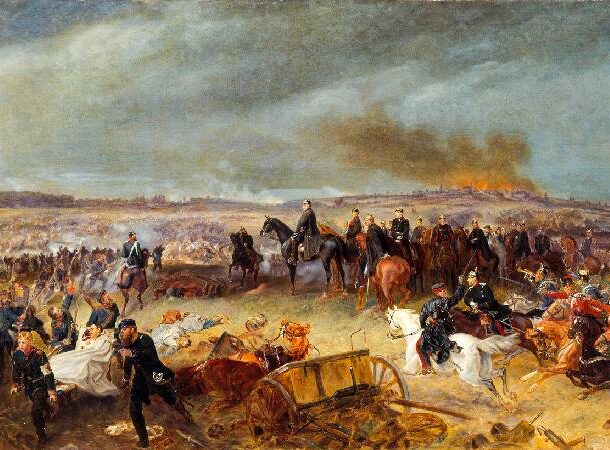 https://www.habsburger.net/en/events/battle-koeniggraetz-1866#:~:text=In%201866%20Habsburg%20forces%20suffered,ruled%20by%20the%20Hohenzollern%20dynasty.; https://www.britannica.com/event/Battle-of-Koniggratz
https://www.habsburger.net/en/events/battle-koeniggraetz-1866#:~:text=In%201866%20Habsburg%20forces%20suffered,ruled%20by%20the%20Hohenzollern%20dynasty.; https://www.britannica.com/event/Battle-of-Koniggratz The Battle of Sadowa was fought during the Seven Weeks’ War that led to Austrian defeat at hands of the Prussian army.
Prussian victory let to the “Lesser German Solution” and the creation of the German Empire.
It also led to Austria’s exclusion from Prussian dominated Germany.
Battle of San Jacinto (1836)
 https://www.history.com/topics/mexico/battle-of-san-jacinto
https://www.history.com/topics/mexico/battle-of-san-jacinto During the Texas war for independence from Mexico, the Texan militia (led by Sam Houston), led a surprise attack against Mexican General Antonio Lopez de Santa Anna at San Jacinto (near present day Houston).
The Mexican forces clearly lost, and hundreds were taken prisoner, including Santa Anna.
Texas then had their independence.
Battle of Ayacucho (1824)
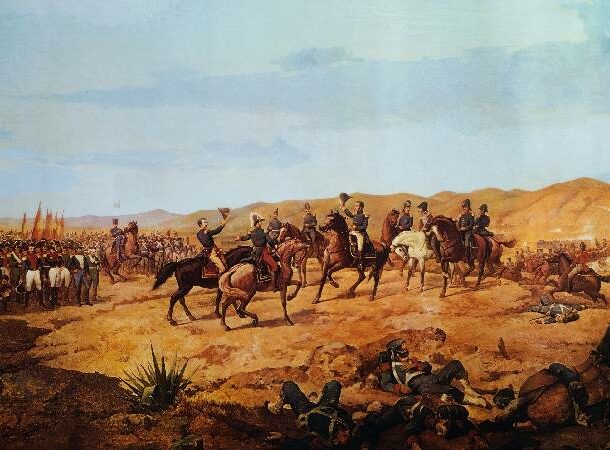 https://www.britannica.com/place/Ayacucho-Peru
https://www.britannica.com/place/Ayacucho-Peru The Battle of Ayacucho was fought during the Peruvian War of Independence. They were seeking freedom from Spain.
The Spanish forces had a slightly larger army but about 10 times as many artillery pieces, giving them the upper edge.
However, what they didn’t have was loyalty from other South Americans. The Peruvian forces included other South American militia – Venezuelans, Colombians, Argentinians, and Chileans.
Before battle, many people left the Spanish line and went over to fight along side their friends.
The Spanish forces were defeated and their viceroy and generals captured. Terms of surrender were to leave Peru and Charcas (now Bolivia).
The Battle of Waterloo (1815)
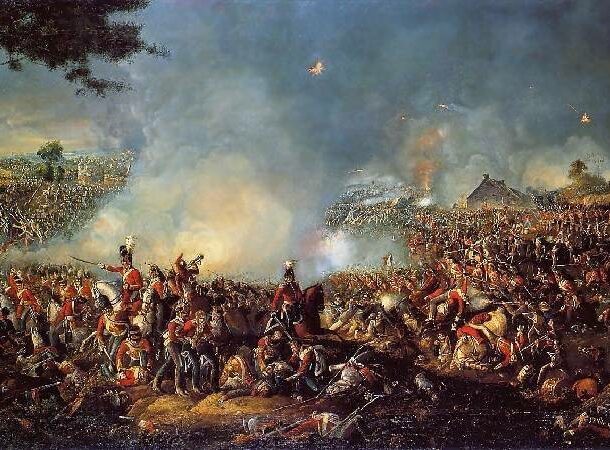
When Napoleon returned to power in 1815, he knew he had a few battles to fight in order to stop those trying to overthrow him, namely the Seventh Coalition.
This coalition was made of two separate armies, the Prussians and the British. Napoleon knew he had to defeat them separately before they combined forces on the battlefield.
He quickly defeated the Prussian army and was well on his way to defeating the British forces when the remnants of the Prussian army regrouped and joined the battle.
Napoleon then had to split his forces and was quickly attacked from the other side. The French forces lost 41,000 troops to the Coalitions 24,000. Napoleon was captured and exiled to the island of Saint Helena.
The Battle of Valmy (1792)
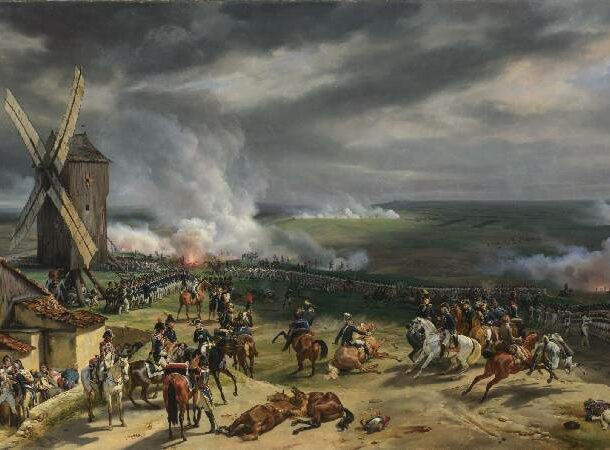 https://www.britannica.com/event/Battle-of-Valmy; https://www.worldhistory.org/Battle_of_Valmy/
https://www.britannica.com/event/Battle-of-Valmy; https://www.worldhistory.org/Battle_of_Valmy/ Not too long after the American Revolution, things were heating up in France. In 1791, Austria and Prussia signed an agreement promising military action if republicanism continued in France.
France of course continued towards becoming a republic.
Prussia was also helping to restore the French monarchy and decided to march on Paris; however, they were unsuccessful.
Victory for France in this battle allowed them to invade the Austrian Netherlands and allowed for the establishment of the First French Republic.
Siege of Yorktown (1781)
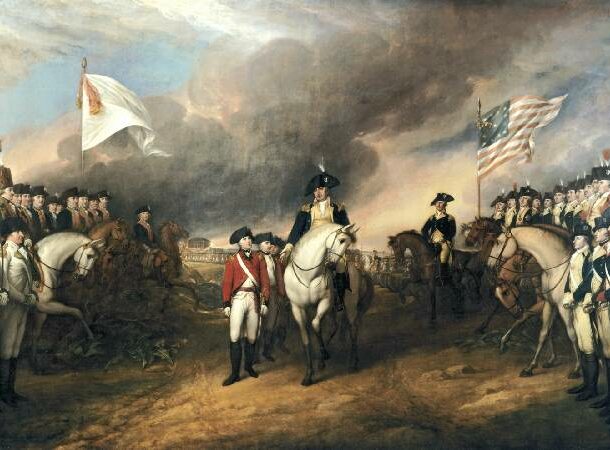
While the Battles of Saratoga were incredibly significant, the Siege of Yorktown was *the* decisive battle of the American Revolution.
Troops under General George Washington marched from New York to Yorktown, Virginia and surprised the British troops under General Charles Lord Cornwallis.
With help from the French, this victory shifted things toward American victory in the American Revolution.
It was the last major land battle of the Revolution, and it led to peace negotiations and the signing of the Treaty of Paris in 1783.
Battles of Saratoga (1777)
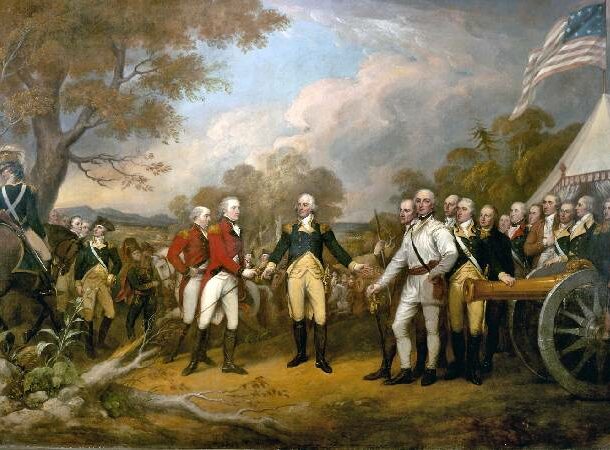 https://www.battlefields.org/learn/revolutionary-war/battles/saratoga; https://www.britannica.com/event/Battles-of-Saratoga
https://www.battlefields.org/learn/revolutionary-war/battles/saratoga; https://www.britannica.com/event/Battles-of-Saratoga In the second year of American Revolution, there were two Battles of Saratoga fought 18 days apart, and they marked a turning point in the war, with the victory belonging to the continentals.
Why were these battles so important?
They prevented British control of the Hudson River Valley area and sealed the support from France.
Battle of Plassey (1757)
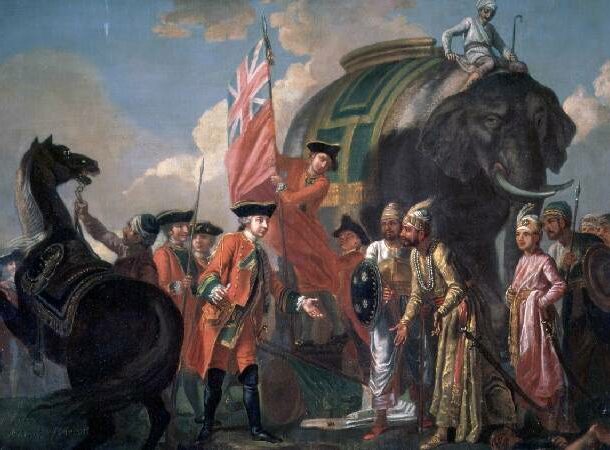 https://www.britannica.com/event/Battle-of-Plassey
https://www.britannica.com/event/Battle-of-Plassey In 1755, there were a few “representatives” from other countries vying for top position in India. Two of these were the British East India Company and the French East India Company.
The newest Nawab (ruler) of Bengal at that time was pro-French and took to overthrowing British posts.
After Calcutta was taken, the British went to take it back and on the way were confronted by the Nawab in Plassey.
The British forces were vastly outnumbered; however, when it started to rain, the British had protection for their ammunition and the French did not. When the French charged in, the British were able to continue to fire.
The Bengal and the French lost 1,500 men out of 50,000; the British less than 100 of 3,000.
This battle marked the start of almost 2 centuries rule of British rule in India.
Battle of Poltava (1709)
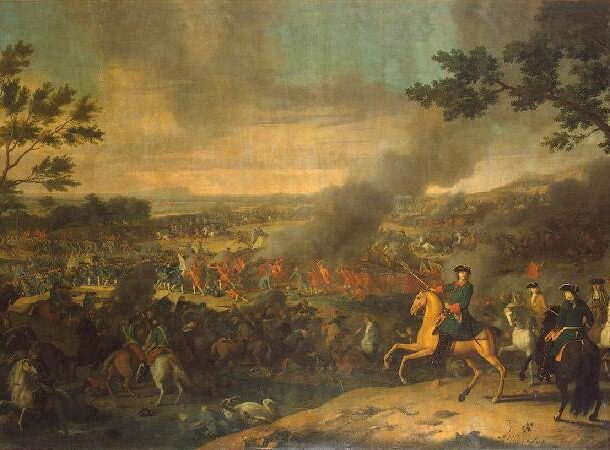 https://en.wikipedia.org/wiki/Battle_of_Poltava
https://en.wikipedia.org/wiki/Battle_of_Poltava Waged between Russia and Sweden, the Battle of Poltava is considered the largest and most decisive battle in Great Northern War. Poltava was a trading center and military depot, and therefore a strategic location to have control over.
Despite being seriously weakened by harsh weather, Sweden laid siege to Poltava. They failed in such a way that their loss in this battle has been deemed the greatest military catastrophe in Sweden’s history.
It knocked the Swedish Empire from being a great European power and made way for Russian dominance in Northern Europe.
Battle of Sekigahara (1600)
 http://www.historyofwar.org/articles/battles_sekigahara.html
http://www.historyofwar.org/articles/battles_sekigahara.html Warlord Toyotomi Hideyoshi, a defacto ruler of Japan, died in conquest of China in 1589. This left a massive power struggle between Ishida Mitsunari and Tokugawa Ieyasu.
This battle put an end of major power struggle.
It started with pretty equal forces, but soon Tokugawa Ieyasu’s men were slowly losing. At that time, Ishida Mitsunari called on fresh help, the Mori, but the Mori decided to sit by and do nothing, turning on him. The Mori, along with 4 other generals, and fell on Mitsunari’s rear.
Ieyasu was victor and became Shogun.
Fall of Tenochtitlan (1521)
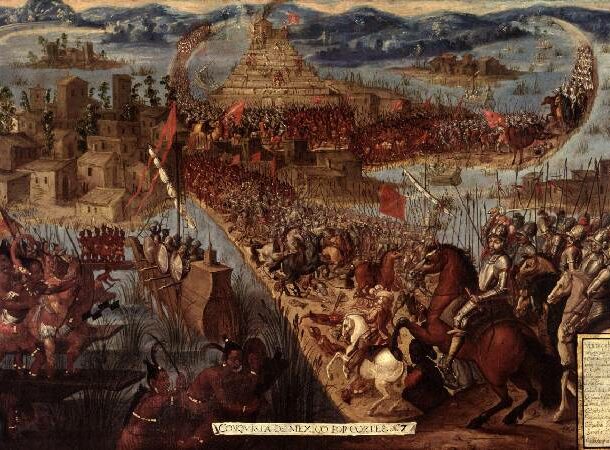 https://www.britannica.com/event/Battle-of-Tenochtitlan
https://www.britannica.com/event/Battle-of-Tenochtitlan This military engagement was waged between the Aztecs and the Spanish.
Spanish forces (under Hernan Cortes) combined forces with local tribes to conquer the Aztec capital of Tenochtitlan.
It took them 93 days, but eventually, in thanks to both a Small Pox outbreak and better weapons, the Spanish forces took over the city.
This victory put an end to the Aztec Empire and allowed the Spanish to take stronger control over what was to become the colony of New Spain.
The Siege of Orleans (1428-1429)
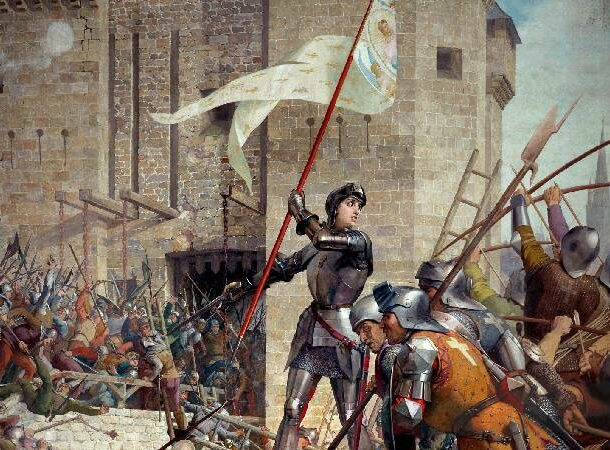 https://www.history.com/topics/middle-ages/siege-of-orleans; https://en.wikipedia.org/wiki/Siege_of_Orl%C3%A9ans
https://www.history.com/topics/middle-ages/siege-of-orleans; https://en.wikipedia.org/wiki/Siege_of_Orl%C3%A9ans The Siege of Orleans was an important battle for two reasons:
One, it was the turning point during the Hundred Years’ War between France and England.
Two, this was when Joan of Arc burst onto the scene as a military genius.
The City of Orleans was besieged by the English, and it continued for several months. The siege, however, was put to an end by none other than Joan of Arc. Then a teenage peasant, she led an army of French soldiers to put a stop to it.
This battle happened at the peak of English successes in the war – had English forces succeeded, their dreams of conquering all of France might have been realized.
Battle of Manzikert (1071 AD)
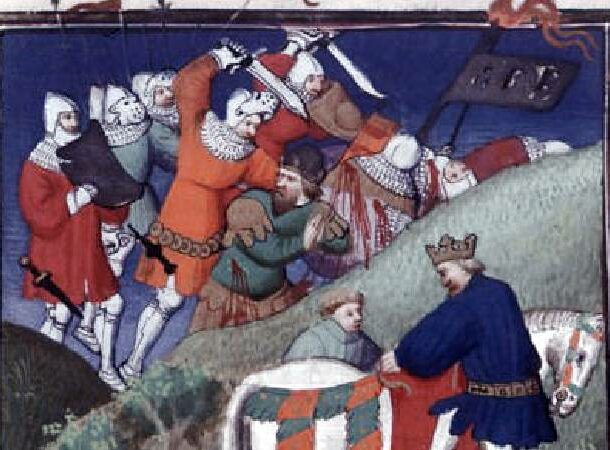 https://www.britannica.com/event/Battle-of-Manzikert;
https://www.britannica.com/event/Battle-of-Manzikert; This battle marked the beginning of the end of the Byzantine empire as a militarily viable state.
The Battle of Manzikert was waged between the Byzantines and the Seljuq Turks.
The Seljuqs were starting to push into Byzantine territory, so the Byzantines tried to reestablish their security of the eastern front.
When the Byzantines entered the Turkish-held city of Manzikert, the Turks rushed to meet them. The Byzantines possibly could have won except for betrayal in ranks – some of their troops were Turkmen.
Many important and elite Byzantine troops were killed in this battle. The leading general was captured and only returned after key Byzantine territories were turned over to the Turks. He was then blinded and killed by his political enemies.
Battle of Hastings (1066)
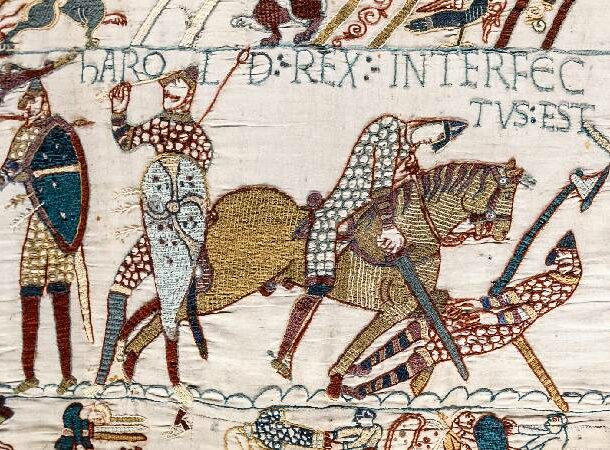
When King Edward the Confessor died, he left behind a power vacuum as he had no heir. In his place, Harold Godwinson took the English throne.
Sensing an opportunity, Norman-French Duke of Normandy, William, decided to invade. He quickly did so, and when William came through as the clear victor, so started the Norman Conquest of England.
Battle of Tours (732 AD)
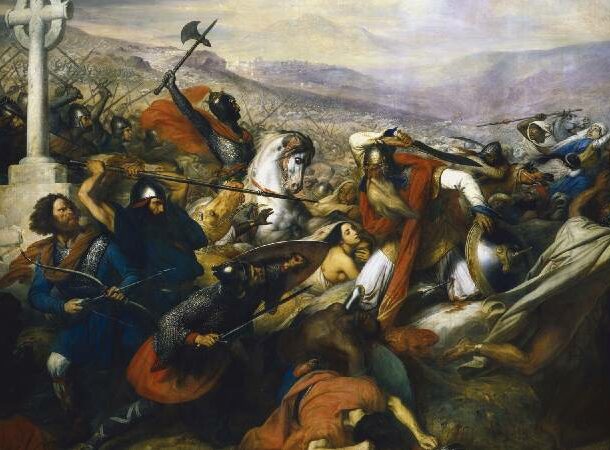
This battle took place somewhere between the cities of Poitiers and Tours in what is now west-central France. Muslim invaders from Spain were moving successfully across Europe. This area of battle was seen as the line between the Muslim invaders and Frankish territories.
To combat the Umayyad forces (the Muslim forces), Charles Martel (with the Frankish forces) arranged his army in a defensive square. The Muslims were faced with the task of fighting a literal uphill battle, which they ultimately lost.
While this battle didn’t fully end Muslim advance, it allowed Charles to assert his authority in the area – which is important as he paved the way for his grandson, Charlemagne, to bring the area under Frankish control.
Battle of the Catalaunian Plains (451 AD)
This turned out to be one of the last major military battles of the Western Roman Empire. It was waged between a coalition of Roman and Visigoth forces against the Huns.
This battle is known for its ferocity, and it stopped the advancement of the Huns and destruction of Gaul (a Roman territory) and the culture of Western civilization.
Historians point to this being the turning point to the end of Attila and the Huns, as it put a big dent in his reputation for being invincible.
He conceded another battle a year later, and within the next 16 years, he died, his sons fought amongst themselves, and Attila’s massive empire dissolved.
Battle of Pharsalus (48 BC)
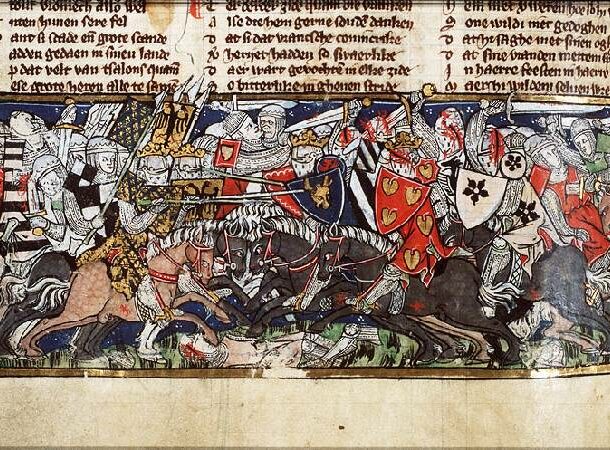 https://www.britannica.com/summary/Battle-of-Pharsalus; https://en.wikipedia.org/wiki/Caesar%27s_civil_war
https://www.britannica.com/summary/Battle-of-Pharsalus; https://en.wikipedia.org/wiki/Caesar%27s_civil_war Before the Romans had their empire, they had their republic, and during this time, there was a Roman Civil War.
This war was waged between Julius Caesar and Pompey.
Caesar had just been defeated by Pompey when they met again in Greece. Pompey had double the number of men.
However, due to Caesar’s military tactics, he was able to win. Pompey fled and his men surrendered, fled, or were killed.
Soon after, Caesar was made dictator for life in 44 BC after putting out a few more military fires.
Battle of Carrhae (53 BC)
 https://www.britannica.com/biography/Marcus-Licinius-Crassus
https://www.britannica.com/biography/Marcus-Licinius-Crassus Audacious greed can sometimes backfire.
In 53 BC, the Roman Republic under Marcus Licinius Crassus initiated an unprovoked attack against the Parthian Empire.
Despite it being a surprise attack, Surenas, a Parthian noble, annihilated or captured almost all of Crassus’s legions. Survivors fled, and Crassus was killed after being tricked into meeting with Surenas.
Battle of the Metaurus (207 BC)
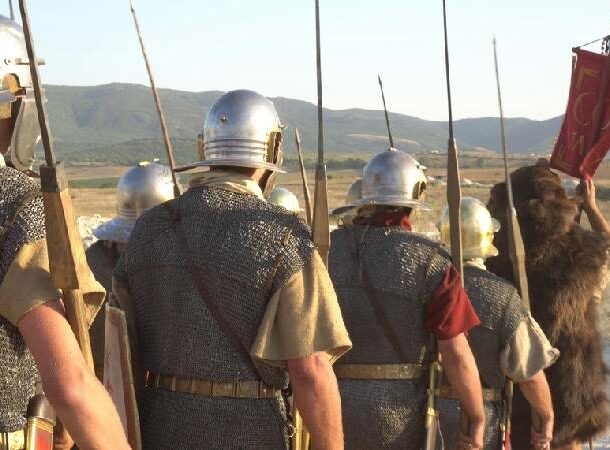 https://www.worldhistory.org/Battle_of_the_Metaurus/
https://www.worldhistory.org/Battle_of_the_Metaurus/ This battle was fought between Rome under Nero and the Carthaginians under Barca.
Barca was on his way to join forces with his brother, Hannibal, in Italy. They planned to attack the city of Rome, hoping to end the Second Punic War between Rome and Carthage.
A Roman force led by L. Porcius Licinius and Marcus Livius Salinator held Barca’s forces on the way to his brother, and Nero came to lend aid. They put an end to Barca’s forces…and to Barca himself.
Without his brother’s help, Hannibal’s armies were unable to claim victory over Roman-held territory. When he was then called to Africa, Hannibal lost against another Roman general and Rome was able to claim victory over the entire war.
Had the Carthaginians won this battle, or had Barca made it to his brother earlier, historians speculate that the war could have gone a lot differently.
Battle of Gaugamela (331 BC)
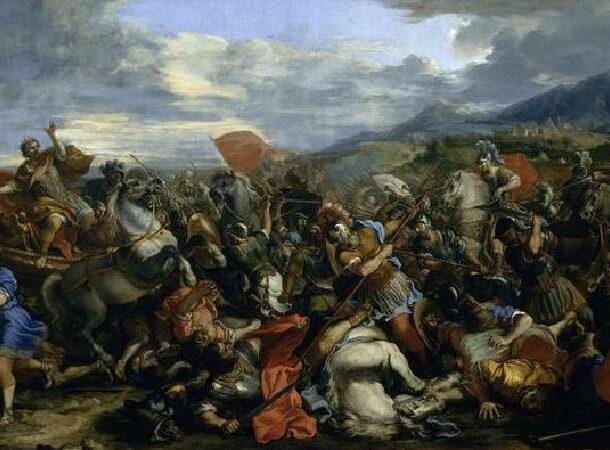
Fast forward to 331 BC. This one involves Alexander the Great, and it’s the battle that gave him control over the Persian empire.
After a series of defeats, the morale of the Persian army was low. When the Greeks (under Alexander) went on the offensive against the Persians, you might guess that it didn’t go too well for the Persians.
The Persians still greatly outnumbered the Greeks, but Alexander’s military strategy along with his elite soldiers didn’t give them much of a chance.
When he realized his defeat, Persian ruler Darius III turned and ran, his army behind him.
He was then murdered by one of the governors under his rule. Thus ended the Persian empire.
Battle of Thermopylae (480 BC)

This. Is. Sparta!!!!
Or at least this is the battle the movie 300 was based on.
The Battle of Thermopylae was waged between the Persians under Xerxes I and a group of Greek city-states under Leonidas I.
10 years after the defeat at the Battle of Marathon, Xerxes had amassed a large army both on land and at sea. At that point, he set off to conquer all of Greece.
In response, Leonidas led 7,000 men to block the pass of Thermopylae. The Greeks at this point were used to being outnumbered, and while they lost this Battle, they held the Persian army off for 7 days, 3 of which were spent in direct battle.
Towards the end, Leonidas realized he was outflanked, so he let most of his army go and stayed back with 300 Spartans and 700 Thespians. They all fought the Persians till death.
Battle of Salamis (480 BC)
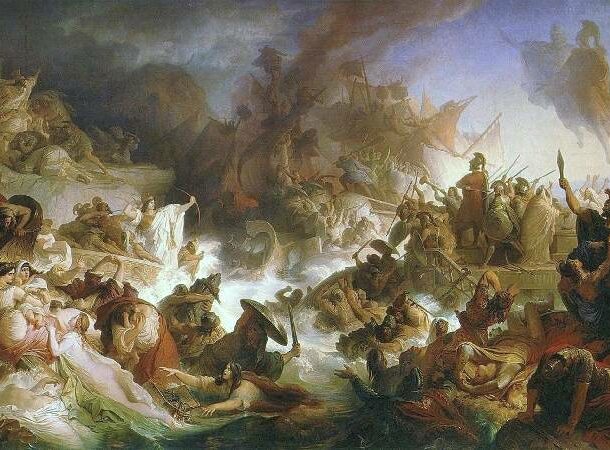
Darius was really mad now and could not forget about the Greeks. So, he of course planned another invasion. He died before he could carry it.
His son, Xerxes carried out said invasion instead. In a battle fought at sea, the Persian’s 1207 ships met with the Greek’s 371 ships.
The Greeks lured the Persians into the Straights of Salamis. The Persians took the bait but were slaughtered because there were so many ships in the Straights that they couldn’t properly maneuver.
Greek civilization was saved again.
Battle of Marathon (490 BC)
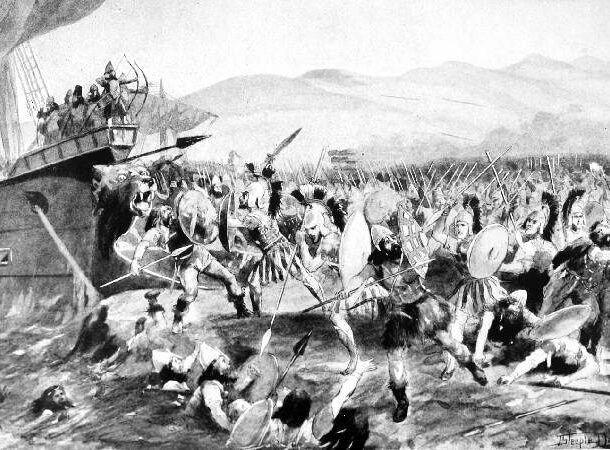 https://owlcation.com/humanities/Top-10-Decisive-Battles-in-History
https://owlcation.com/humanities/Top-10-Decisive-Battles-in-History This is the first of a few battles on this list between the Greeks and Persians.
In order to help revolutionaries overthrow Persian rulers, Athens (Greece) sent troops to their aid. They even burned down the city of Sardis.
Well, Darius I (from Persia) didn’t appreciate this, so in 490 BC, he sent 600 ships carrying 1,000 cavalry and 25,000 infantrymen to just north of Athens.
Although the Greeks only had 10,000 Athenian and 1,000 Plataean troops, they stormed straight down the center of the Persian troops under the command of a general named Miltiades. Everyone thought he was crazy, including the Greeks, who were baffled by such bold moves.
Yes, the Greek center was weakened, but then the army rallied to flank the sides, and the Persians broke ranks and fled for the ships.
Without this victory, Greek culture would have been lost, and western civilization would be much different than it is today.
Battle of Kadesh (1278 BC)
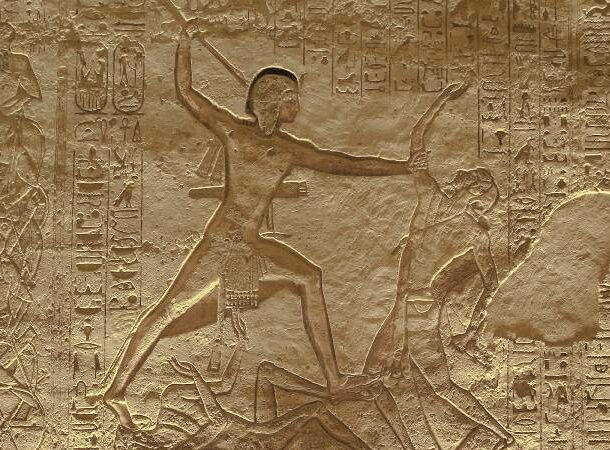 https://www.arce.org/event/battle-kadesh; https://www.britannica.com/event/Battle-of-Kadesh
https://www.arce.org/event/battle-kadesh; https://www.britannica.com/event/Battle-of-Kadesh So as a refresh, remember that BC dates run biggest to smallest, so when we say this battle was in 1278 BC, know it was a LLLOOONNNGGG time ago.
It is currently the earliest recorded battle found described in detail. It was also the largest recorded chariot battle.
The Battle of Kadesh occurred in what is present day Syria between the Egyptians under Ramses II and the Hittites under King Muwatalli II.
In this battle, the Egyptians were tricked into an ambush by two spies. At one point, it seemed the Hittites were winning, but then the Egyptians rallied for a counter-attack.
There was no outright victor, although both claimed victory.
So why was this battle so important? It led to the 1st recorded peace treaty.



























